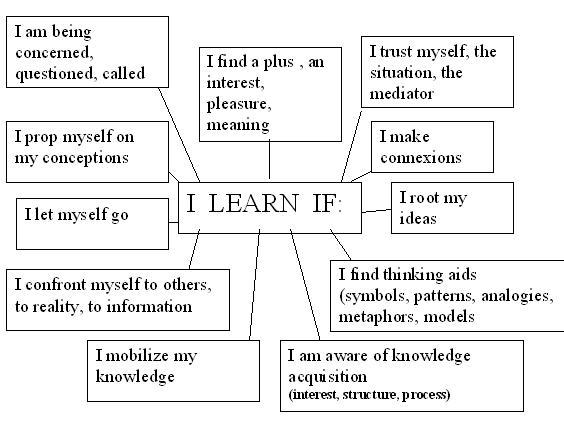André Giordan, published the 30 October 2010.
Over the last ten years or so, the mechanisms of the "learning" have been radically transformed with the emergence of the allosteric model.⨠Today numerous teams around the world are using it successfully (modelo alosterico de aprentizaje o MAA, allosteric learning model) and not only in Sciences where it was first developed. It is use in the teaching of languages, human sciences, economics, health science and sports, mathematics etc. It is in use in kindergarten as well as in universities. â¨This is what will eventually bring progress to both, the teaching methods (the fact that the teacher teaches doesn’t imply that the student learns") and the structure of the school. â¨"Too many of the current methods prevent from learning: the slicing up of courses, the scheduling, the combination of disciplines"
Thus, the allosteric model is very much in use in different sectors less inert than Education: the professional training of engineers, technicians etc, the "living" mediation, and the use of the New Technologies of Information and Communication. Health studies and patient education have seriously started their initiation into it through the training of hospital staff. Furthermore allostery is at the center of a few museum exhibitions.
However the most original use of this model is to be found in the company, in the context of "learning companies". The allosteric model enables to rethink the questions of organization, of communication and memory. Allostery and "learning"
The allosteric model enables to apprehend the learning process in its real dimension, in a complex one that cannot be simplified by a unique pedagogical method. Too much didactics can even prevent the learning process as much as excessive autonomy given to the student can stop the access to knowledge. â¨It is indeed a totally paradoxical process. The learner on his or her own, can learn from who he or she is , from what he or she already knows ...but not all alone.⨠Although one learns a lot from oneself and through the self, through experiencing, one still learns also from others, especially through what has been inherited from those who preceded us.. â¨The learner learns from his "conceptions" that make up the only tool he or she can dispose of. Yet he or she must fight against them.⨠In reality "learning" is much more than a mere construction. In order to elaborate his or her knowledge, the learner must simultaneously deconstruct what he or she already knew ! This is the most difficult thing to achieve...
In all situations, the learner must always be considered "the author" of his knowledge. Nobody can learn in his or her place. To learn means to face reality, to face others, to express oneself, to discuss, to develop networks, to multiply experiences... without any guarantee against obstacles. This doesn’t mean that that the teacher and the school are not needed any longer! Quite the opposite... Their role is to create the desire to learn, to question, to accompany, to provide with areas for learning and "thinking aids" or still to serve as reference points. What matters is to provide the learner with a relevant allosteric environment that will permanently interfere with his or her own conceptions.

â¨â¨Allosteric environment favorable to the learning process
Yes indeed! One can learn at school but not in just any conditions! The conceptions of the learner are a starting point. Before starting a class, a few questions need to be asked in order to draw up a statement of the audience. What do the students feel like learning? What are they preoccupied with? What do they already have in mind? How do they perceive the issues addressed in the course? What can I, as a teacher, use as a base from which to make the learners progress? Which doesn’t mean that the teacher should always start his or her class this way and run the risk of causing boredom! What is essential is to keep these issues in mind.
A progress in the learning process is not the fact of the individual alone, like the constructivists like to hammer it in or that of the environment like the behaviorist suggest. It is the result of an emergence created from the interaction between both.⨠Here comes a new paradox: the individual can only develop by himself but propping up on the experience of others. At the same time, the learner does not only develop knowledge, he or she also designs his other own learning process. Only once a piece of knowledge means something to him or her, then the learner can acquire it and develop his or her system of representation.
Facing a market economy always more complex, to learn has become for the company the best way to remain competitive. In order for them to progress it must transform its practices, its mentalities, its ways of dealing with the general context and thus draw the lessons of its successes and failures The company can develop a "learning culture" in which each member of staff, each team and eventually the whole company will be able to optimize its potentials⨠A company becomes a learning one when on the one hand it capitalizes and transfers its experiences, individual as well as group competencies created within its organization and when on the other hand it allows the staff to create and to develop oneself in total confidence The allosteric model associated to a physionic approach enables to rethink the issues of work organization, management, anticipation of the competence and the training within the scope of a shared company project.